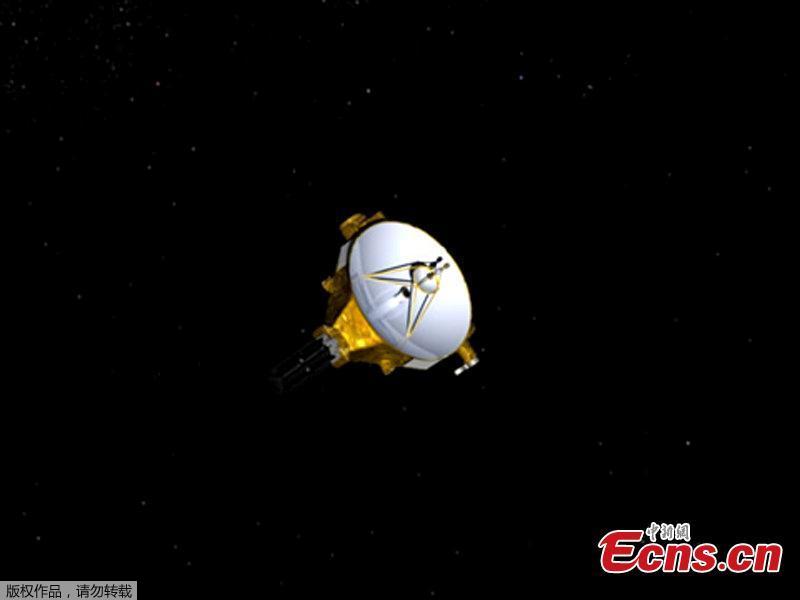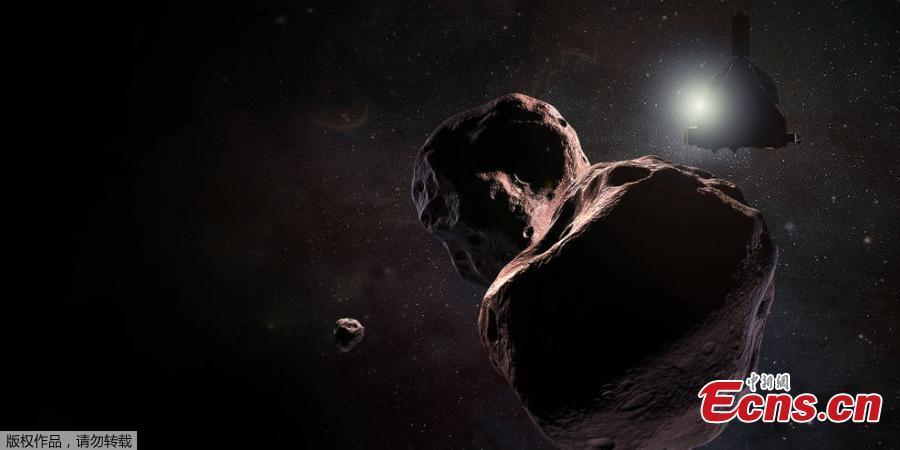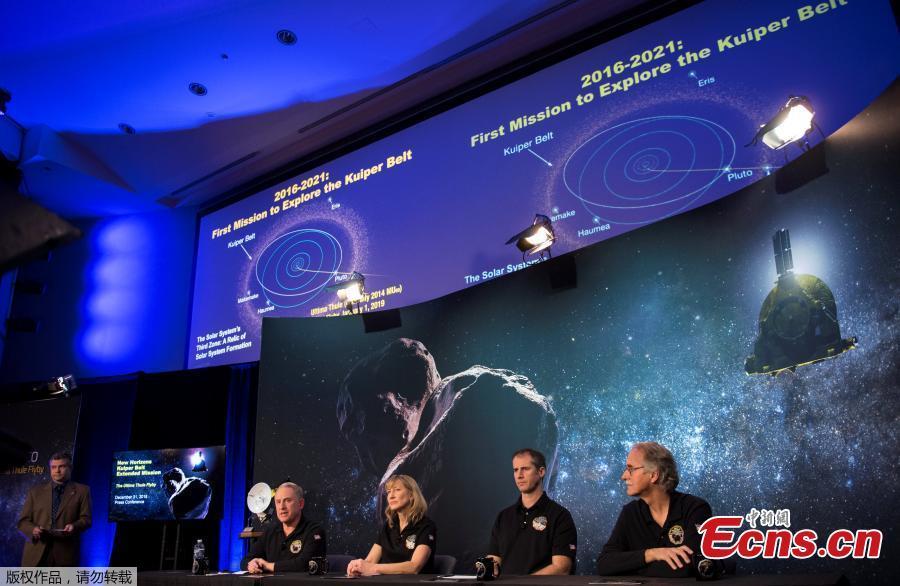
An artist's illustration of NASA's New Horizons spacecraft as it flies by Ultima Thule (2014 MU69) in the Kuiper Belt beyond Pluto on Jan. 1, 2019. The U.S. space agency's New Horizons probe has made contact with Earth to confirm its successful flyby of the icy world known as Ultima Thule. (Photo/Agencies)

An artist's illustration of NASA's New Horizons spacecraft as it flies by Ultima Thule (2014 MU69) in the Kuiper Belt beyond Pluto on Jan. 1, 2019. The U.S. space agency's New Horizons probe has made contact with Earth to confirm its successful flyby of the icy world known as Ultima Thule. (Photo/Agencies)

A new image of Ultima Thule, (Right) is displayed during a press conference after the New Horizons team received confirmation from the spacecraft has completed a flyby of Ultima Thule, Jan. 1, 2019, at the APL in Laurel, Maryland. The spacecraft survived the most distant exploration of another world, a tiny, icy object 4 billion miles away that looks to be shaped like a peanut or bowling pin. (Photo/Agencies)























